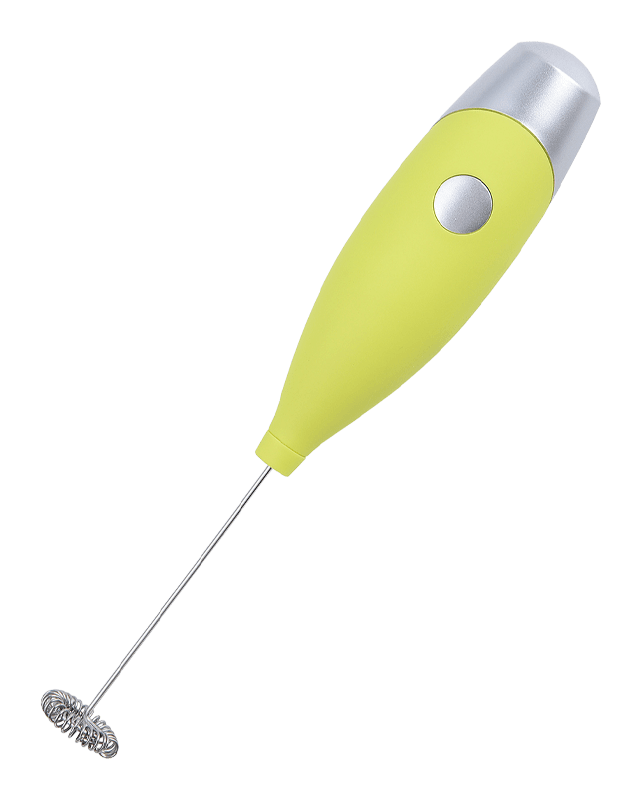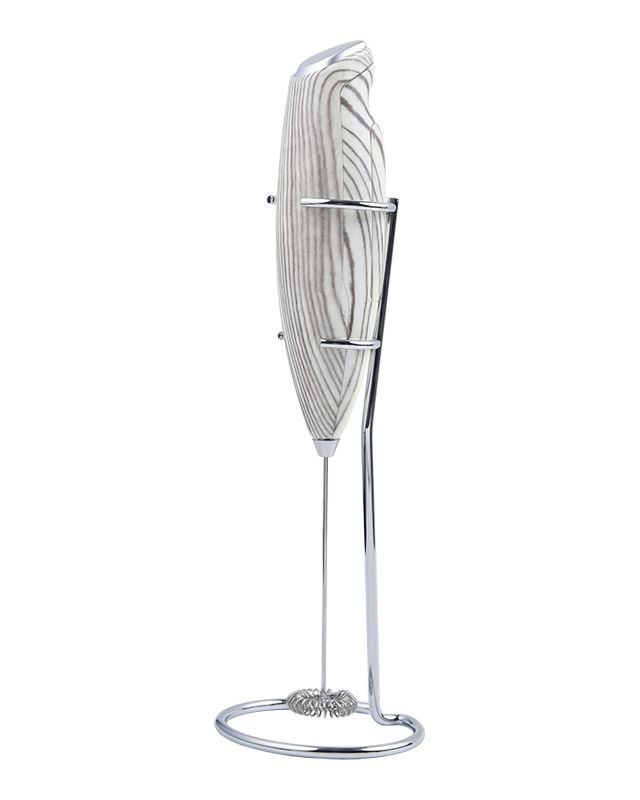Handle Design: The handle design of a Stick Milk Frother goes beyond mere aesthetics; it's a critical factor in ensuring user comfort and safety. A contoured handle with ergonomic shaping fits naturally into the hand, reducing strain during prolonged use. Textured or rubberized grips provide tactile feedback and prevent slippage, even when hands are wet or greasy. The size and shape of the handle should accommodate various hand sizes and grip styles, catering to a diverse range of users.
Weight Distribution: Achieving optimal weight distribution in a Stick Milk Frother involves careful engineering to balance the weight of internal components. By distributing weight evenly throughout the device, manufacturers prevent fatigue and discomfort, even during extended frothing sessions. This balance enhances user control and precision, allowing for smoother operation and more consistent froth quality. Lightweight materials in strategic areas minimize overall weight without compromising durability or performance.
Length and Reach: The length of the frother shaft is a crucial design consideration that directly impacts usability and versatility. A longer shaft provides greater reach, allowing users to froth milk in deeper containers or larger vessels without immersion limitations. Telescoping or adjustable shafts offer flexibility, accommodating a variety of container heights and sizes.
Button Placement: Button placement is more than just a matter of convenience; it's about intuitive interaction and user-centered design. Large, tactile buttons with distinct shapes or textures enhance usability, particularly for individuals with visual or motor impairments. Illuminated or backlit buttons improve visibility in low-light conditions, ensuring effortless operation at any time of day.
Stability: Stability is paramount in any kitchen appliance, and Stick Milk Frothers are no exception. A stable base or bottom prevents tipping and rocking during operation, minimizing the risk of spills or accidents. Engineers may employ design strategies such as widening the base, increasing surface contact area, or adding anti-slip pads to enhance stability on various surfaces. Low center of gravity design principles ensure optimal balance and support, even when frothing heavy or viscous liquids.
Material Quality: The choice of materials significantly influences the overall quality and longevity of a Stick Milk Frother. High-grade stainless steel is a popular option for frother shafts and whisk attachments due to its durability, corrosion resistance, and ease of cleaning. Food-safe plastics, such as BPA-free polypropylene or ABS, are commonly used for housing components, offering a lightweight yet robust enclosure. Seamless construction and smooth finishes prevent bacteria buildup and facilitate thorough cleaning, promoting hygienic usage over time.
Splash Guard: A well-designed splash guard is more than just a cosmetic accessory; it's a functional feature that enhances user experience and cleanliness. By containing splatters and overspray, a splash guard minimizes mess and cleanup effort, preserving the surrounding environment. Engineers may integrate splash guards into the frother's housing or accessory attachments, ensuring seamless operation without obstructing frothing performance. Adjustable or removable splash guards offer customization options, allowing users to adapt the frother to their specific needs and preferences.
Milk Frother, Milk Foamer, Coffee Mixer, Mini Mixer, Stirrer, Whisk EP-426-3




 English
English
 Français
Français
 Español
Español
 Deutsch
Deutsch
 日本語
日本語





























